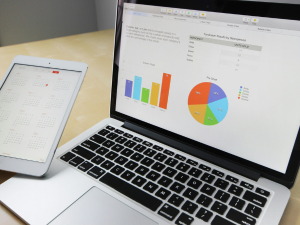 Machine Learning: The Powerhouse Driving Predictive Analytics for Businesses
Machine Learning: The Powerhouse Driving Predictive Analytics for Businesses
As a business owner, how often have you made decisions without complete certainty? Whether adapting to shifts in market dynamics or responding to changing customer preferences, the pressure to make the right call can feel immense. Until now, much of business strategy has relied on a blend of intuition and experience, often involving a degree of trial and error.
This blog aims to answer these frequently asked questions (FAQs):
1. How does machine learning improve predictive analytics for businesses?
2. What are the main business benefits of using machine learning?
3. How can my business get started with machine learning?
Enter machine learning (ML)—the technology that transforms how businesses predict outcomes, empowering decision-makers to move forward with confidence. Machine learning, a subset of artificial intelligence (AI), has become the backbone of predictive analytics, reshaping how businesses gather, analyze, and act on data.
For business owners, CEOs, and decision-makers looking to leverage technology to stay ahead of competitors, understanding the impact of machine learning is crucial. In this guide, we’ll delve into how ML enhances predictive analytics, explore key techniques, and uncover the many benefits it offers to businesses like yours.
How Does Machine Learning Improve Predictive Analytics?
 Predictive analytics isn’t new—it’s long been a vital tool for businesses to forecast trends, predict customer behavior, and anticipate potential challenges. However, traditional predictive analytics relies heavily on historical data, human interpretation, and pre-set rules to analyze patterns and predict future outcomes.
Predictive analytics isn’t new—it’s long been a vital tool for businesses to forecast trends, predict customer behavior, and anticipate potential challenges. However, traditional predictive analytics relies heavily on historical data, human interpretation, and pre-set rules to analyze patterns and predict future outcomes.
In contrast, machine learning automates and enhances this process, offering far greater accuracy, scalability, and adaptability. With ML, systems can process large datasets, identify complex patterns, and continuously learn from new data—all without manual intervention. This results in more reliable predictions and better-informed business decisions.
Key Differences Between Traditional and Machine Learning-Enhanced Predictive Analytics:
- Automation: Machine learning models continuously learn from new data, whereas traditional models need manual updates.
- Adaptability: ML models adapt to evolving patterns in real-time, ensuring predictions remain relevant even in changing environments.
- Speed: ML handles vast amounts of data quickly, delivering faster insights than traditional methods.
For businesses, this means less time spent on data processing and more time using that data to drive growth and innovation.
Machine Learning Techniques That Power Predictive Analytics
When it comes to implementing machine learning in your business, there are several techniques to choose from, depending on your specific needs and goals. Each technique uses a different approach to uncover insights and make predictions based on data patterns.
 1. Supervised Learning
1. Supervised Learning
Supervised learning is one of the most common machine learning techniques. It uses labeled data—data that includes both input variables and known outcomes—to train the model. The system learns from these examples and applies its learning to new, unseen data to predict future outcomes.
For instance, in sales forecasting. By analyzing past sales data and market conditions, supervised learning can predict future sales trends, helping businesses adjust their strategies accordingly.
2. Unsupervised Learning
Unlike supervised learning, unsupervised learning works with unlabeled data, meaning the system isn’t given a clear output to learn from. Instead, it analyzes the data to identify hidden patterns or relationships. This technique is ideal for discovering new insights that may not be immediately obvious to human analysts.
An example iscustomer segmentation. By analyzing customer data without predefined categories, unsupervised learning can identify distinct customer groups with similar behaviors, helping businesses tailor their marketing efforts.
3. Reinforcement Learning
Reinforcement learning involves training models through trial and error, rewarding them for making the right decisions and penalizing them for making the wrong ones. The system continuously improves its decision-making process over time to maximize positive outcomes.
An instance is in policy creation and optimization. Reinforcement learning can be used to test different policy scenarios and optimize decisions for maximum effectiveness, such as in pricing strategies or resource allocation.
 The Business Benefits of Machine Learning in Predictive Analytics
The Business Benefits of Machine Learning in Predictive Analytics
Now that we’ve explored the techniques that drive machine learning in predictive analytics, let’s look at the specific benefits this technology can offer to your business.
1. Enhanced Decision-Making Accuracy
One of the most significant advantages of machine learning is its ability to reduce uncertainty in decision-making. By processing large volumes of data, ML models can provide predictions with far greater accuracy than human intuition or traditional analytics. This allows business leaders to make informed choices based on data-backed insights.
For example, businesses can forecast demand more accurately, optimize their supply chain, or even predict which customers are most likely to churn, enabling them to take proactive action.
2. Real-Time Data Analysis
In today’s fast-paced business environment, having access to real-time data is crucial. Machine learning models can analyze incoming data instantly, allowing businesses to react to market changes, customer behaviors, and operational shifts as they happen.
This ability to adapt on the fly means business owners and CEOs can make timely adjustments to strategies, avoid potential risks, and seize new opportunities with confidence.
 3. Cost Savings and Efficiency Gains
3. Cost Savings and Efficiency Gains
While implementing machine learning requires an upfront investment, the long-term cost savings can be substantial. ML automates many of the time-consuming tasks involved in data analysis, reducing the need for additional staff or resources. Additionally, ML improves efficiency by identifying opportunities to optimize operations and minimize waste.
For example, machine learning can streamline everything from production processes to marketing campaigns, ultimately boosting your bottom line.
4. Improved Customer Insights and Personalization
Machine learning enables businesses to better understand their customers. By analyzing data from customer interactions, browsing habits, and purchasing behaviors, ML models can predict what products or services individual customers are most likely to want. This allows businesses to deliver more personalized experiences, improving customer satisfaction and loyalty.
Personalization is key to maintaining a competitive edge in today’s market, and businesses that leverage machine learning can create highly targeted marketing strategies that resonate with their audience.
5. Proactive Risk Management
With its ability to identify patterns and anomalies in data, machine learning is an essential tool for risk management. Whether it’s detecting fraud in financial transactions or predicting supply chain disruptions, ML can help businesses identify potential risks before they escalate into major issues.
By proactively managing risks, business owners can protect their operations and avoid costly setbacks.
 How to Implement Machine Learning in Your Business
How to Implement Machine Learning in Your Business
Implementing machine learning may seem daunting, but with the right approach, it can be a seamless process. Here’s how to get started:
- Evaluate Your Data Infrastructure: Ensure your business is collecting and storing sufficient, high-quality data. Machine learning models rely on clean, reliable data for accurate predictions.
- Identify Key Use Cases: Determine which areas of your business could benefit the most from predictive analytics. Whether it’s forecasting demand, improving customer retention, or optimizing supply chain operations, start with a clear goal.
- Choose the Right Tools: Select machine learning tools or platforms that align with your business needs. Cloud-based solutions can offer scalability and flexibility.
- Partner with Experts: Work with a trusted IT services provider, like Central Texas Technology Solutions (CTTS), to help you navigate the complexities of machine learning implementation and ensure success.
Top 3 FAQs About Machine Learning in Predictive Analytics Answered:
1. How does machine learning improve predictive analytics for businesses?
Machine learning enhances predictive analytics by automating data processing, identifying hidden patterns, and continuously learning from new data. This leads to more accurate predictions, faster insights, and better decision-making, enabling businesses to optimize operations, personalize customer experiences, and stay competitive.
2. What are the main business benefits of using machine learning?
The primary benefits include improved decision-making accuracy, real-time data analysis, cost savings, efficiency gains, personalized customer experiences, and proactive risk management. These advantages help businesses operate more effectively and respond quickly to market changes.
3. How can my business get started with machine learning?
To get started, evaluate your data infrastructure, identify key use cases for predictive analytics, choose the right machine learning tools, and consider partnering with an IT services provider like CTTS to guide you through the process.
By integrating machine learning into your predictive analytics strategy, your business can unlock valuable insights, improve decision-making, and gain a significant competitive edge in today’s fast-moving market. For expert guidance on implementing ML, contact CTTS today!
